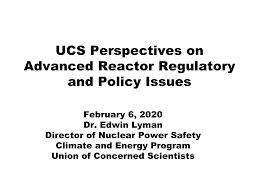
I've read a range of articles about the validity of using more nuclear power to combat global warming. The bottomline is this: IT DEPENDS ON WHO IS FUNDING THE STUDY OR WRITING THAT ARTICLE!
Here are some scientific facts in graphic form provided by German Environment Agency:
- The energy sector is the largest emitter of greenhouse gases: 40%, and rising.
- Note that when you include the entire life cycle, nuclear falls in between natural gas and the renewables.
- So, yes, nuclear is better than the fossil fuels.
- However:
- Nuclear systems emit 13 times more carbon dioxide than onshore wind power and 29 times more than hydropower.
- Cost a lot more and takes five times longer to build.
- Time is of the essence, and nuclear does not meet this test...plus, once built, you are stuck with an expensive and potentially dangerous power option for a very long time.
- Every dollar invested in nuclear energy is a dollar diverted from urgent climate action.
- Climate warming has already shut down nuclear plants because of drying rivers.
- During the past 20 years, 95 nuclear power plants have gone online and 98 shut down. Taking China out of the equation, the number of nuclear power plants has shrunk by 50 reactors.
- There remain the issues of dirty bombs and decommissioning, plus where to store the radioactive waste.
- Long time lag between planning and operation.
- Cost.
- Weapons proliferation risk.
- Meltdown risk.
- Mining lung cancer risk.
- Carbon-equivalent emissions and air pollution.
- Waste risk.
- The U.S. nuclear power industry is at an impasse, for since 2012 11 of the 104 nuclear power plants have closed.
- This industry is trying to reverse the trend by looking to what it likes to call advanced reactors.
- However, despite the name, these designs are based on unproven concepts from more than 50 years ago.
- A close look at the claims of higher efficiency, less radioactive waste, reduce risk of nuclear proliferation and early commercialization do not hold up to scrutiny.
- They took a close look at Bill Gates' TerraPower's 345-megawatt Natrium reactor, and said it was flawed and will take at least 20 years to build.
- The Nuclear Regulatory Commission is accused of wishful thinking.
I'll close with the story of the Secret Santa, who annually, with selected elves, hand out hundreds of $100 bills to random strangers. There are several stories, but they all seem to link to one man:
- One version is that it all began in 1971 when Larry Stewart, a homeless man, went to the Dixie Diner in Houston, with an intent to sneak out after eating the biggest breakfast on the menu.
- But the owner, Ted Horn (right), sensed what was about to come, so he snuck up behind the guy with a $20 bill in his hand and said, I think you might have dropped this.
- Horn died in 2009.
- With that experience of giving, Stewart (right) vowed that if he ever got rich, he would return the favor. He did eventually make millions in cable TV and long-distance telephone service, and beginning in 1979 gave away more than a million dollars to total strangers over 26 years as the Secret Santa of Kansas City, who sometimes traveled elsewhere, and even to sites of disasters.
- But he was diagnosed with terminal cancer in 2006 at the age of 56.
- His friend dropped by to see Stewart in his hospital bed and asked if there were any regrets. Yes, Steward said, I just wish I could have helped more people.
- Stewart passed away in 2007.
- Whether it was this friend or the elves he had also trained or the Society of Secret Santas he founded, the giving has run up to $2 million...all from the supposedly original $20.
- More so, the concept of Secret Santas has been adopted worldwide, and Reddit has an annual effort with more than 85,000 participants.
- Watch this video. Here is just one elf, Moses:
-
















Comments
Post a Comment